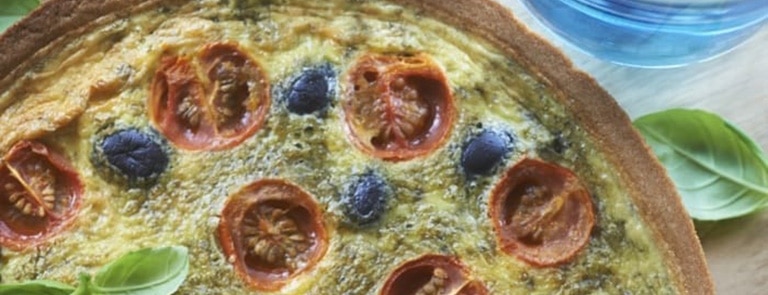20% off €35
Code:SAVE20
How to stay healthy on a dairy-free diet

Top nutritionist and ‘Free From’ expert Christine Bailey offers some practical advice to make sure your dairy-free diet is healthy and nutritious.
By Nutritionist and Free-From expert Christine Bailey
Whether you have a dairy allergy, intolerance or follow a vegan diet, going dairy-free can mean you may miss out on some key nutrients. Top nutritionist and ‘Free From’ expert Christine Bailey offers some practical advice to make sure your dairy-free diet is healthy and nutritious.
Cow’s milk allergy is one of the most common food allergens, especially in infants and children. Making the decision to go dairy-free can feel somewhat daunting and you may be concerned that you (or your child) are missing out on key nutrients. Dairy products provide protein, vitamin B12, B2 and minerals such as potassium, calcium and phosphorous. Take out dairy and you need to make sure you get these nutrients from other foods.
Simple calcium rich breakfast, lunch and dinner options
Breakfast - To get sufficient calcium you could have a fortified soya yogurt with fruit and almonds or baked beans on toast. Lunch - Serve up a leafy green salad with a tahini dressing and a hard boiled egg. Dinner - Include vegetables such as broccoli and spinach in a tofu stir-fry. Snacks - Dried figs, oranges or almond nut butter on oatcakes are great for an additional calcium boost. Drinks - Smoothies using fortified milk alternatives are another quick and easy way to add calcium to your diet especially if you cram in some greens as well. Leafy greens like kale, broccoli, spinach and watercress also provide vitamin K and magnesium, which are equally essential for bone health.Maintaining recommended calcium levels
Calcium is often one of the biggest concerns. Calcium and vitamin D play an important role in the formation and maintenance of strong bones and teeth. For growing children these nutrients are particularly important. In fact our bone mineral density peaks between the ages of 20 and 30 so it’s equally important for teenagers and young adults too. It’s also worth remembering that for healthy bones you need a wide range of additional nutrients not just calcium and vitamin D. These include magnesium, zinc, boron, silica, protein, B12, vitamin C and vitamin K. (See our handy table at the bottom of this article for a guide to what dairy-free foods contain calcium and how much).Getting enough protein from a dairy-free diet
Dairy is also a complete protein, meaning it provides all the essential amino acids our bodies need for health. Of course there are plenty of other complete protein rich foods – meat, fish and eggs for example. For vegans simply replacing milk with soy milk, hemp or almond milk, which are good sources of protein is an easy option. Other vegan protein rich foods include tofu, beans and pulses, spirulina, and some wholegrains such as wheat and quinoa, nuts and seeds. In contrast to animal sources of protein, vegetable proteins typically lack one or more of the 9 essential amino acids and this varies depending on the particular type of vegetable protein (i.e. legume, grain or nut/ seed). It is therefore important to ingest a wide variety of vegetable sources of protein over a course of a day in order to compensate for this shortfall.Vitamins and minerals for diary-free eaters
For the potassium typically found in dairy foods, all you need to do is include a range of fruits and vegetables, as they are naturally rich in potassium. Good choices include sweet potatoes, tomatoes, bananas and avocado. The best source of vitamin D is actually sunlight – so try and get outdoors for at least 20 minutes each day. Food sources include oily fish (e.g sardines, mackerel, salmon), egg yolks, liver and mushrooms particularly shittake mushrooms. Some fortified milk alternatives also contain vitamin D. There should be no problem with getting sufficient B vitamins on a dairy-free diet. They are abundant in meat and fish, vegetables and grains. However if you are vegan getting sufficient B12 may be more difficult. Vegan sources of B12 include spirulina, nutritional yeast flakes, marmite, fortified cereals, fortified milk alternatives and dairy-free yogurts. Phosphorus is another essential nutrient required for strong bones and teeth but as it is found in so many foods it is unlikely you will be deficient. Nuts and seeds, fish, shellfish, meats, soy, beans and pulses are all good sources.Dairy alternatives - more free-from choice than ever before!
Thankfully there are now numerous dairy-free alternatives available. Instead of milk you could try soya milk, nut milks (e.g almond), coconut milk, hemp milk, rice milk or oat milk. Not all products available are enriched with the vitamins and minerals provided by milk, so be mindful to choose ones that have been when making your choice. If you miss your cheese try the range of soya and nut varieties on the market or you can make your own nut cheese by blending up almond, macadamia or cashew nuts with a little lemon juice, water and flavour with nutritional yeast flakes. Instead of cream you can use soy cream, oat cream or coconut cream. There are also a great range of dairy-free ice creams based on soy, rice, nuts or coconut. If you’re looking for an alternative spread to replace butter why not try nut butters or tahini as these are nutrient rich and will provide calcium too. Coconut oil is another healthy alternative, which provides lauric acid known to support your immune system. Coconut oil is also fabulous in cooking too. The options are endless!A handy guide to how much calcium is in non-dairy foods
If you are concerned about your calcium intake the daily recommended amount for adults is 800mg while teenagers need 1000mg. If you suffer with osteoporosis you will need slightly more – around 1000-1200mg daily. The easiest way to make sure you get your daily quota is to include some calcium rich foods at each meal and snack. Aim for 3 servings of calcium rich foods daily. See our table for calcium rich foods.| Food | Calcium Content |
|---|---|
| Tofu (1/2 cup, 125g) | 253mg |
| Almonds (1 cup, 90g) | 251mg |
| Fortified Soy or Almond Milk (1 Glass, 200ml) | 250mg |
| Pot Fortified soy yogurt (150g) | 250mg |
| Spinach, cooked (1 cup, 180g) | 245mg |
| Chia seeds (28g, 1oz) | 177mg |
| Baked Beans, 1 cup (250g) | 126mg |
| 2 canned sardines (with bones) | 91mg |
| Kale, 1 cup raw (67g) | 90mg |
| 1 orange | 73mg |
| Tahini, sesame seed paste, 1tbsp | 63mg |
| Okra, cooked (1/2 cup, 80g) | 61mg |
| 4 Dried Figs | 53mg |
| Almond nut butter, 1tbsp | 43mg |
| Watercress (1 cup, 35g) | 40mg |
| Broccoli, cooked (1/2 cup, 80g) | 31mg |
| Quinoa, cooked (1 cup, 185g) | 31mg |



